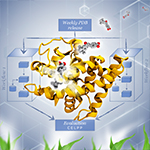UC San Diego Chemists Take Aim at Drug Predictions
Health & BehaviorUC San Diego chemists offer new system to ease the synthesis and evaluation of the algorithms, the chemistry and the technology needed to predict the bound poses of ligands within a targeted protein—a necessity for designing new drugs.



















